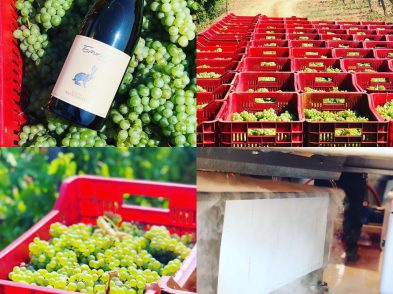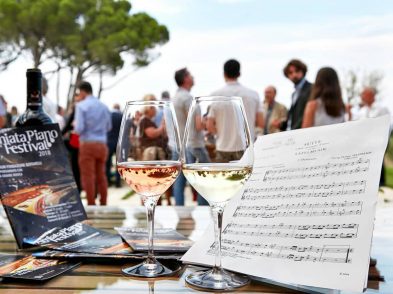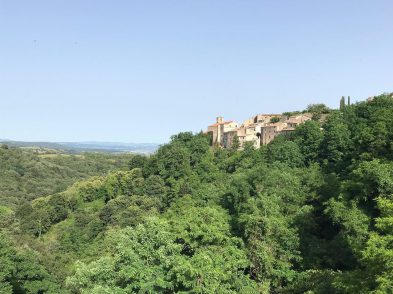Southern Tuscany is cleaning up for the second time in two years after floods on October 14 claimed two lives and caused millions of euro in damages. Residents are calling it a ‘bomba d’acqua’ (water bomb) as 140 millimetres of rain and hail drenched the Maremma in just two hours. It was a storm no one saw coming as weather forecasters had predicted light rain, and authorities had opted not to issue a severe weather warning.
The municipality of Manciano was the worst hit. It was here, at around 6pm, that Marisa and Graziella Carletti, 65 and 69, lost their lives. The sisters were returning home from a relative’s house when the banks of the Elsa river exploded, sweeping their Citroen C3 70 metres through mud and water and into a ditch. Emergency services were unable to save the pair, both of whom died at the scene.
A further 27 residents were air-lifted from their homes as bridges and roads collapsed, cutting off exit routes from the towns of Montemerano and Saturnia.
In the wake of the storm, authorities have been quick to point the finger. Regional president Enrico Rossi laid the blame at the feet of the Consorzio di Bonifica della Toscana Sud (Southern Tuscany Reclamation Consortium) in an interview with newspaper La Repubblica, accusing the organisation of unacceptable delays on works to fortify the Albegna riverbanks.
But Manciano’s mayor Marco Galli says a proper weather warning would have made all the difference. ‘We were expecting between 40 and 80 millimetres of rain and were unprepared. The meteorologists made a mistake and our citizens paid for it.’
Estimates calculate more than 8 million euro worth of damage in the municipality of Manciano alone, with minor damage also recorded in nearby Capalbio and Orbetello.
Riccardo Lepri was at home during the storm and watched as his vineyard and agriturismo were damaged. ‘The pressure of the water was so strong it smashed through walls and drowned our property,’ he says. ‘Most people think that’s the worst part. But it’s not. Tonnes of mud are now suffocating my vineyard. Vines are fragile plants and they’ve been crushed. The effects of this flood will be felt long after the water has receded.’
Wine producers like Riccardo were lucky enough to have ended their vendemmia two weeks ago, but it is a different story for local farmers and olive oil producers. Oil mill owner Maurizio Bianchi says this year’s olive crop is set to be the lowest in recent history. ‘This time last year, we were already producing hundreds of litres of olive oil,’ he says. ‘We were just days away from harvesting our olives when the storm hit. Local growers had no idea it was coming, so they didn’t pick anything. Now their trees are damaged and their ripened fruit smashed or washed away.’
For many farmers, metre-high layers of mud now cover their newly sown fields. Mario Guazzi, in the municipality’s south, says he has no idea whether any of his plants have survived. ‘How do we scoop away the mud without scooping out our seeds and crops? It’s impossible.’
But as clean-up crews scramble get to the municipality of Manciano back on its feet, the biggest fears are for the tourism industry. The Terme di Saturnia Spa is the largest source of jobs and revenue in the area, drawing more than 50,000 visitors a year. Located on the banks of the Gattaia river, it felt the full force of the storm as floodwaters ripped up fences, damaged buildings and equipment, and filled the pools with mud and debris. Initial estimates said the spa would not be reopened before the new year. The Terme di Saturnia’s director Licinio Garavaglia has promised, however, they will do everything to be back in business by early November.
For other tourism operators, there’s a real fear the storm has scared off future tourists. It is not a loss most can sustain after a lacklustre summer saw a drop in tourist figures.
Two weeks after the flood, residents in Marsiliana staged a sit-in, blocking the main road to Grosseto and forcing president Rossi to attend the site. He later held a meeting in the area, promising residents partial compensation with the hope of future funds from the national government. At the time of printing, protesters were continuing their sit-in as they said they were unsatisfied with the president’s promises.
As locals shovel away the mud, it is hard not to draw comparisons between these floods and the ones that damaged the same area in 2012. (For an analysis of the causes and costs of this flood, see theflr.net/2012flood.) Most are saying this time around, it is far worse; others are not convinced. But everyone agrees that the sense of déjà vu is hard to stomach.








